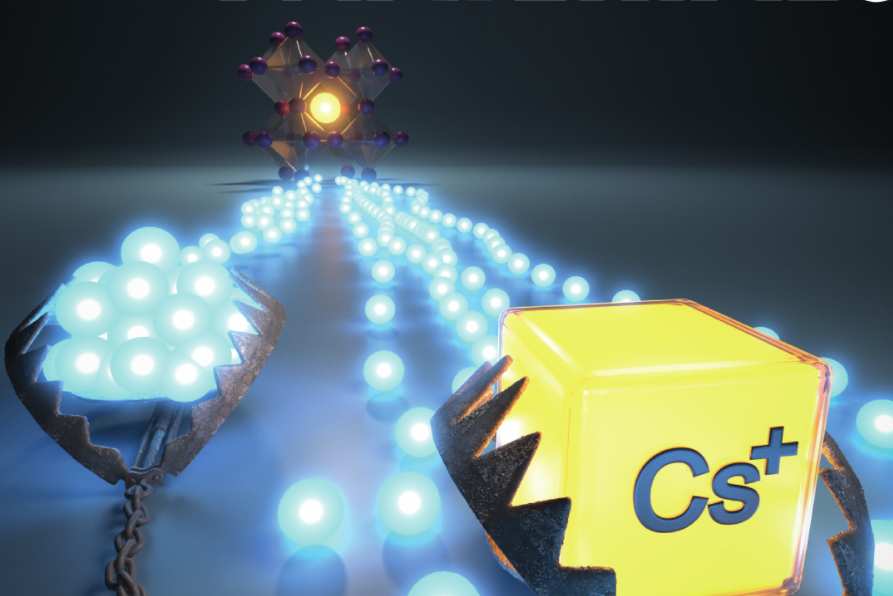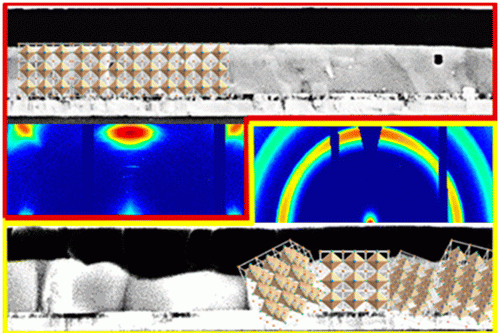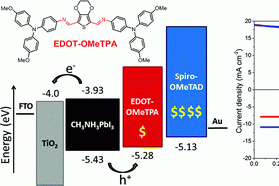Selected Publications





Hybrid metal halide perovskite materials have recently attracted enormous attention due to their promising optoelectronic properties, particularly in the context of novel solar cell developments, but also as emitters in light emitting diodes (LEDs). While several physical properties of these materials such as tunable light harvesting capabilities and high charge carrier mobilities are promising features for a possible revolution in photovoltaics, there are still important issues such as the toxic lead content in the most efficient perovskite absorbers as well as limited stability under operating conditions. Hence, alternative lead-free solution-processable semiconductors attract increasing attention. Recent projects in the group have focused on lead-free perovskite-like materials such as the double perovskite Cs2AgBiBr6 serving as light absorber in solar cells.
We have addressed the bottlenecks faced by solar cells comprising the above double perovskite absorber material, suggesting a strong impact of ionic conductivity in the material, field-driven charge extraction and non-selective contacts, as well as high non-radiative recombination, which was also supported by strongly red-shifted electroluminescence. Taken together, these results suggest a poor selectivity of the contacts and charge transport layers, caused by poor energy level alignment that can be overcome by optimizing the architecture of the solar cell. Moreover, charge transport within films of Cs2AgBiBr6 could be improved by using simple synthesis pathways and modified precursor stoichiometry. For example, a significant change in the crystal orientation within the films, an increase in the charge carrier lifetime of the films, as well as an improvement of the charge carrier mobility could be achieved with this approach. Moreover, combination of the 3D double perovskite with a 2D layered analog featuring large organic cations was demonstrated to enhance contact selectivity, to improve energy level alignment (and hole extraction) and electron blocking behavior, and to enhance the resulting solar cell parameters.
Present projects focus on the impact of isostructural ionic substitution in the framework of the double perovskites on their electronic properties, the investigation of alternative lead-free double perovskite and perovskite-like materials (such as Cs2AgSbBr6 or MA3Sb2I9 (MA = methylammonium) including thin film synthesis and metal alloying strategies, and the physical properties of novel highly stable 2D layered perovskites (Ruddlesden-Popper (RP) phases) comprising organic cations with electronically interacting aromatic and heteroaromatic moieties. In the latter context, we have recently achieved the synthesis highly oriented thin films of chloride-, bromide- and iodide-based Ag-Bi double perovskite RP phases that show electronic and emissive properties dominated by phonon-coupled and defect-mediated polaronic states and can be employed as photodetectors.
The design of novel anti-perovskite phases (and thin films) with reverse charges of the constituent elements is an exciting new endeavor, based on theoretical work predicting very favorable optoelectronic features for solar cells such as suitable direct band gaps, small carrier effective masses and low exciton binding energies, as well as strong optical absorption.
